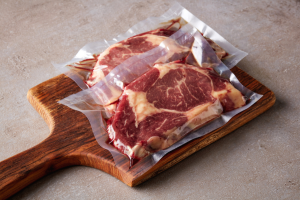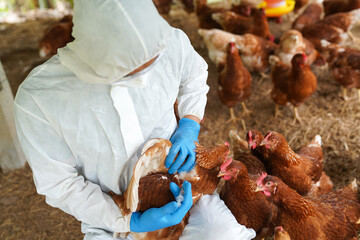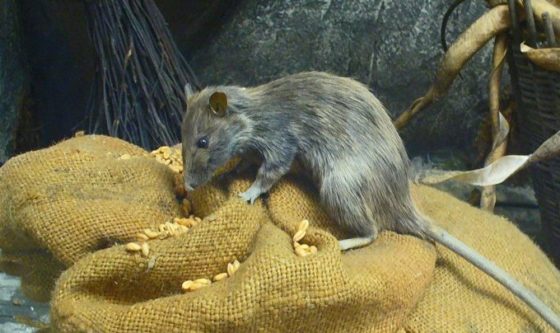How to Store Meat Outdoors in Winter

When you first think of it, storing meat outside in the winter sounds great. On paper, it’s free refrigeration, which can come in very handy during a disaster or normal times. All that cold air mother nature provides lets you keep a deer, or similar large animal cold seemingly indefinitely.
Yet when you really dig into the real-world experience of storing meat outdoors in winter, the nuts-and-bolts details get a little tricky.
I’ve spent decades butchering animals in the fall, including wild game like deer, and hogs from a local farmer who used to sell me a whole hog for $100 on the day after Thanksgiving. In these experiences, I’ve learned a few things about how to store meat outdoors in winter, and I thought I’d pass them along to you.
Temperature Range Is Key
 When storing meat outside in winter you have to worry about the natural freeze-thaw effect that can happen as the temperature swings from day to night. You also have to be concerned about deep cold temperatures, which can degrade the quality of the meat more than you might think!
When storing meat outside in winter you have to worry about the natural freeze-thaw effect that can happen as the temperature swings from day to night. You also have to be concerned about deep cold temperatures, which can degrade the quality of the meat more than you might think!
Ideally, you want to keep the meat at temperatures between 28°F to 32°F. This ensures the meat remains frozen, without the high risk of freezer burn.
Technically the “Danger Zone” for bacteria doesn’t start until 40°F. Yet the meat will still start to thaw at the surface if the daytime temperature gets over 32. When it freezes again at night, new ice crystals will form, which can damage the meat fibers.
If this happens too many times, you quickly end up with disgustingly freezer-burned meat. So bad in fact that you’ll even notice it if you stew the meat.
On the other end of the spectrum meat that gets too cold, can dry out at the surface, and suffer from freezer burn in the deeper recesses of the primal cut.
Avoid Sun Exposure
 Even in the depths of winter, the sun’s rays can affect the surface of the meat. Even a minimal amount of infrared light kissing the surface of the meat can thaw a microscopic layer of ice crystals.
Even in the depths of winter, the sun’s rays can affect the surface of the meat. Even a minimal amount of infrared light kissing the surface of the meat can thaw a microscopic layer of ice crystals.
When night comes again the moisture on the surface of the meat freezes again. These new ice crystals then cause microscopic punctures, leading to rapid freezer burn.
While you might be able to get away with hanging a side or whole carcass for a day or three before completely butchering, you shouldn’t just leave meat exposed to sunlight for any longer. You can also try this method used by our forefathers and still works without fail to this day.
Protect the Meat
 Protecting meat outdoors in the winter comes in many different forms. This starts with protecting it from animals. I don’t just mean coyotes, bears, wolves, and vultures. Even pesky squirrels and raccoons will come to check it out. You don’t want them making a mess of it.
Protecting meat outdoors in the winter comes in many different forms. This starts with protecting it from animals. I don’t just mean coyotes, bears, wolves, and vultures. Even pesky squirrels and raccoons will come to check it out. You don’t want them making a mess of it.
The smell of protein on the wind can even draw rodents to your property. Even if you take measures to keep mice and rats from getting at exposed meat, they’ll still be drawn to your home and outbuildings. So, you don’t want lax outdoor storage of meat leading to a rodent infestation!
Related: If You Have Been Storing Meat This Way, Stop Doing It Immediately
Protecting the meat also means keeping it safe from freezer burn. In food science terms, this is what happens when microscopic ice crystals develop in the meat fibers, growing larger and puncturing the fibers. This releases the natural juices, drying out the meat and reducing its nutrient value.
The best way to protect meat from freezer burn is to vacuum seal it and then freeze it as fast as possible. If you already have one of those fancy electric food sealers, you’re ahead of the game. However, I would also keep a hand-pump-style food sealer in your inventory, which will let you vacuum seal the meat in bags if the grid goes down. You can always try one of these ingenious methods to refrigerate meat without electricity.
Once you have the meat properly sealed, you should then keep it in sealable containers. I like heavy-duty totes with reinforced corners for easy stacking. They’re opaque to keep light off the meat while being tough enough to keep rodents from chewing their way in.
Rotate the Frozen Meat
 In a long winter or a season when you might butcher multiple animals, you also need to be mindful to check the stored meat for signs of freezer burn. This might include rotating older packages of meat as you add freshly frozen ones to the storage bin.
In a long winter or a season when you might butcher multiple animals, you also need to be mindful to check the stored meat for signs of freezer burn. This might include rotating older packages of meat as you add freshly frozen ones to the storage bin.
When properly vacuum sealed and rapidly frozen, you can expect a package of meat to last in outdoor storage for 4 to 6 months. A larger portion, such as a ham, might start to get freezer burn on the exterior after 4 months. Yet you can usually cut that away to find plentiful good meat underneath.
Frequently Asked Questions
Can I use snowbanks for storing meat outdoors in winter?
If you don’t have any sort of insulating structure, you can keep meat packed deep inside a snowbank. It’s a good, improvised method, as the snow has insulating qualities to it that will keep the meat in the ideal 28 to 32-degree temperature range.
Just make sure it’s in rodent-proof containers. Voles, mice, and many other rodents create subnivean zones under the snow and might find an exposed stash of meat in a snowpack vault.
Can I use butcher paper if I don’t have a vacuum sealer?
Butcher paper is a viable means for storing portions of meat for outdoor winter storage. However, the shelf-life before freezer burn sets in will be roughly half or worse than if it was vacuum sealed. You also have to make sure the portions of butcher-paper-wrapped meat are in heavy-duty storage containers, as animals will be able to smell the meat through the folds in the paper.
What if my meat accidentally thaws while stored outdoors?
If the winter weather takes a warm turn and the meat you have stored outdoors partially thaws for a few hours, it won’t necessarily spoil. However, it will be at high risk of freezer burning again and should be used as soon as possible. If the meat completely thaws or spends more than an hour or two in the “Danger Zone” over 40 degrees. I would use it or discard it.
Can I use frozen meat to make jerky?
Meat that’s been stored outdoors in winter and thawed can still be used to make jerky. Just make sure it’s fully thawed, and you follow all the other rules for safe jerky making. You should try this fool-proof recipe. This is a sound option if your meat accidentally thaws during a winter warm spell or you have extra meat still stored outdoors when spring starts looming on the calendar.
Best Practices for Storing Meat Outdoors in Winter
 The setup I developed over the years was to turn a portion of my unheated pole barn into a safe, clean, cold storage area. I lined the walls with foam panel sheeting which gave it some insulation value to moderate the temperature. So, while the outside winter air temp could still affect it, the temperature range generally stayed between 28 to 32 degrees.
The setup I developed over the years was to turn a portion of my unheated pole barn into a safe, clean, cold storage area. I lined the walls with foam panel sheeting which gave it some insulation value to moderate the temperature. So, while the outside winter air temp could still affect it, the temperature range generally stayed between 28 to 32 degrees.
After butchering the animal, I would portion the meat into serving sizes. For example, this might mean slicing the rib primal into individual chops or keeping linked sausages to three per bag. These smaller portions allow the meat to freeze faster, which reduces the risk of long-term freezer burn problems.
Then I would label each bag with a permanent marker, including the date, and put it in my freezer, on a metal sheet pan with the freezer fan running. The goal is to freeze the meat as fast as possible, which will limit the initial size of ice crystals that form in the meat fibers, Thus, reducing the risk of freezer burn.
Once fully frozen, I’d move them to sealable tote bins. With an inventory of what’s in each bin written on a piece of paper on the side of the tote as well as under the lid.
The tote bins could then be stacked on top of each other to maximize the storage space in the barn. I did my best to stack them in the order I was most likely to use them. With sausages and steaks at the top, and big old hams and double-thick chops for special occasions at the bottom.
While also making sure to rotate the contents of the tote bins. Making sure that the freshest items were being used after the older ones. While rotating, I’d inspect the older vacuum-sealed bags for any signs of freezer burn. If I found a problem, the dog would get a special treat!
You may also like:
6 Ways to Outfox HOA
Why You Should Pour Honey Over Meat (Video)
10 Myths About Storing Food In 5-Gallon Buckets
The 10 Cents Medicine That Every Prepper Needs
Cheap and Easy DIY Fire Starters That Every Prepper Should Know
Read the full article here







